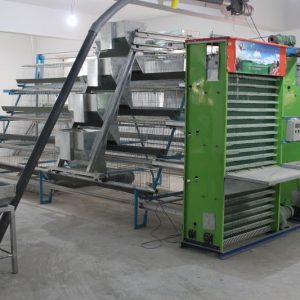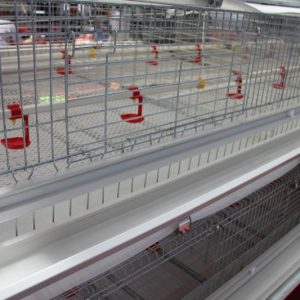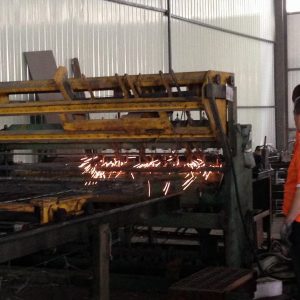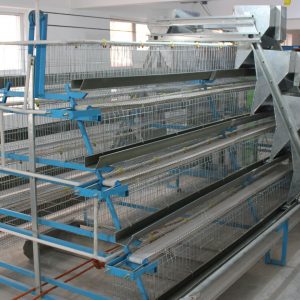
What kind of tree is suitable for breeding chai chicken?
Chai chicken, also known as stupid chicken, Ma chicken. Chai chicken has the characteristics of rough feeding resistance, adaptability, foraging, stable genetic performance, strong nesting and disease resistance. Therefore, it is very popular with farmers, so what kind of tree is suitable for growing chai chicken? How to feed Chai chicken
What kind of tree is suitable for breeding chai chicken?
Generally, we can raise chickens under the peach tree, pear tree, and vines that are common to us.
1. Raising chickens under these fruit trees can not only save some feed costs, but also make the fruit trees less invasive by insects, because chickens can eat insects. And chicken manure can also be used as a fertilizer to provide some nutrition to these fruit trees, which is more conducive to its growth, which also saves some fertilizer money. In the end, this kind of farming is also helpful to the health of the chicken. After all, if the chicken is raised in the orchard, its air will be better, making the chicken less sick.
2. However, not all fruit trees can raise chickens. Like our common citrus trees, chickens cannot be raised, because chicken manure will cause some soil under the citrus trees to caking, which will be detrimental to it. Growth, let it appear to be malnourished, etc., affecting its output.
There is a lot of power in breeding native chickens in orchards, but there are some things to be aware of. Generally, native chickens are suitable for breeding under peach trees, pear trees, etc. You must avoid citrus trees to raise them, otherwise native chickens may be raised, but citrus production will be reduced.
Chaiji breeding technology
Brooding
1. Preparations before entering the chick thoroughly disinfect the chick house. All equipment in the house shall be inspected and repaired. The temperature of the house should be raised to 33 ℃ before entering the chick, and the relative humidity should not be lower than 60%. The light was set at 23 hours light and 1 hour dark. Keep the waterer in a bright place for chicks to find.
2. Choose chicks that are healthy and lively, struggling powerfully, with a clear cry, good navel collection, clean feathers and good uniformity. After the chicks are connected to the house, they should provide drinking water (not less than 35 ° C) and feed as soon as possible to ensure that each chick can drink water and feed normally, and artificial assistance can be provided to the chicks who do not drink water. It is forbidden to sweep the ground within 15 days when the chicks enter the house.
Incubation period
1. Stocking site construction ①After the fence stocking site is determined, nylon nets should be selected to form a closed fence with a height of 1.5 meters, and chickens can freely feed in the pen. The fence area depends on the number of rearing, and each chicken generally covers an average of 8 square meters.
②The construction of the chicken coop should be built in a place with high terrain, dry, good drainage, and more than 500 meters away from the road. It can also be built in the woods or by the woodland, and the chicken coop can be built north to south. The chicken coop can be used in a plastic greenhouse, 6 meters wide, and the length is determined by the number of chickens. The inner layer of the roof is covered with no dripping film, and a layer of straw for thermal insulation is placed on top. And fixed with rope. The lower edges of the two sides of the longitudinal axis of the plastic greenhouse can be rolled or lowered to adjust the indoor temperature and ventilation. The ground in the shed can be lined with fine sand to dry the room, and 6-8 chickens per square meter are raised. At the same time, multi-layer egg laying nests and perching racks are built. The size of the egg laying nests is suitable for accommodating 2 chickens.
2. Feeding and management points The rearing period refers to (31 to 240 days old) chicks after the temperature is raised from the brood to the hen’s production and rooster market stage. It is a key period for chicken growth and development. Pay attention to the following feeding and management technical points.
① Select the stocking season as much as possible to arrange the chicks to be released when the temperature is not lower than 10 ℃ during the day. ② Stocking, training and adjustment In order to make the hens return to the shed on time, it is convenient for feeding. When the de-heated hens are released in the morning and evening, they can be used to taming and tune in regularly by knocking pots or whistling. It is best to cooperate with each other. One person whistles in the front and throws feed to let the chicken follow the robbery; the other is driven with a bamboo rod in the back until they all enter the feeding ground. In order to strengthen the effect, in the first few days of the beginning, set up feed tanks and water tanks in the stocking area every day, add a small amount of full-price feed and water, whistle and feed once. At the same time, the breeder should promptly drive away the chickens returned early. In the evening, use the same method to return home. After repeated training for several days, the flock can establish conditioned reflex.
③ Provide sufficient drinking water. Place some drinking utensils within the range of chicken activities, such as preparing 1 pot of water for every 50 chickens. Also avoid letting chickens drink unclean water.
④The timing and timing of supplementary feeding should be fixed and cannot be changed at will.
It can be supplemented in summer and autumn, and more in spring and winter; about 25 grams of 30 to 60-day-old daily supplements, 1 to 2 supplements per day. The reference formula is: corn 61%, soybean meal 15%, peanut kernel cake 6%, bran 7%, fine bran 5%, fish meal 3%, bone meal 1.7%, vegetable oil 1%, table salt 0.3%. After 8 weeks of age, to increase the energy concentration and feeding amount of the feed, it is also necessary to increase fat, but it is not possible to add fat with strong flavor such as butter and goat oil. The amount of fat added is 3% to 5%. The amount of daily supplements is 30 to 35 grams for 3 to 4 months of age, 40 to 45 grams for 5 to 6 months of age, 50 to 55 grams for 7 to 8 months of age, 2 times a day, 1 time each morning and evening.
⑤The fermented live insects are sterilized and sterilized using pigs and chicken manure plus 20% fertilizer and 3% bran in the pastures. After being mixed and piled up, the film is fermented for about 7 days. Cover the bricks with grass and keep them moist for about 20 days to grow insects. Spread part of the fermented material every day for chicken consumption, which can save 30% of feed.
⑥ Supplementary light The natural light is short in winter and spring, and artificial fill light must be implemented. It is appropriate to use 5 watts per square meter, from early evening to 10 pm, and from 6 am to dawn. Can’t fill light suddenly for a long time, the daily light increases by half an hour, and gradually transitions to 10 o’clock at night. If the natural light exceeds 11 hours a day, no need to fill the light. After the lights are turned off at night, there should be some lights that are not strong enough to illuminate overnight so that the chickens can walk and drink water. In summer when there are many insects, you can hang some purple or incandescent lamps in the place where they live.
⑦ Anti-animal and drug damage measures should be taken to prevent weasels, eagles and other natural enemies from catching chickens. If stocking chickens in an orchard, be sure to use biological pesticides when spraying pesticides.
⑧Regular epidemic prevention and deworming According to the chicken epidemic prevention program, 30-day-old Newcastle disease i-line freeze-dried seedlings are dripped or given 1.5 eye drops, double needles for chicken pox under the skin; 40-day-old bird flu
Subcutaneous injection of 0.4 ml subcutaneously on the stem of oil seedlings; 1 eye-dose lyophilized vaccine for 50-day-old laryngotracheitis; 1 intramuscular injection for 60-day-old Newcastle disease lyophilized vaccine; eye-dose for 90-day-old laryngotracheitis First serving; 110-day-old chicken pox freeze-dried seedlings with double needles under the skin, 0.6ml intramuscular injection of Newcastle disease oil vaccine, 4 servings of drinking water for Newcastle disease iv system; 120-day-old bird flu
Intramuscular injection of 0.6 ml. Use drugs regularly to repel insects.
⑨Meticulous management The management during the incubation period should achieve “five diligence”.
The first is to observe the chickens frequently. Healthy chickens are always scrambling to run out, and sick and weak chickens are slow to move or unwilling to leave the house. The second is cleaning observation. When cleaning the chicken house and the feces, observe whether the feces are normal. The third is replenishment observation. Observe the mental state of the chickens during feeding. Healthy chickens often cannot wait, and sick and weak chickens do not eat or are unresponsive. The fourth is breathing observation. After turning off the lights at night, listen to whether the chicken’s breathing is normal. If there is a “gurgling” sound, it means there is a disease in the respiratory tract. Fifth, observe the feeding time. From stocking to pre-production, the feed intake gradually increased to normal. If sick chickens are found, they should be treated and isolated in time.
Laying period
Production starts when the hen weighs 1.3 to 1.5 kg, and the ratio of male to female commercial laying hens is 1:25. Breeding management is to allow chickens to feed freely in the stocking area during the day, supplementary feeding in the morning and evening, the daily supplementary feeding amount is preferably 50 to 55 grams, and should be done throughout the egg production period (241 to 600 days old) The following points.
1. The nutrient concentration feed during egg production should be concentrated, and supplemented with green and succulent feed, the nutrient concentration of concentrate, crude protein content is 15% to 16%, calcium is 3.5%, phosphorus is 0.33%, table salt 0.37%. To strengthen the management of the transitional period of chickens, there should be a transitional period when feeding from the breeding period to the laying period. When the egg production rate is 5%, the feeding of laying hens is started. The general transition period is 6 days. In the concentrate Change 1/3 every 2 days, and finally turn into a layer of hens.
2. Increasing the light time is generally carried out twice in the morning and evening, and it will be fixed at 6 o’clock in the morning until the day is light. At 6:30 in the evening, it will be filled to 10 o’clock. After that, adjust the daily light time to 17 hours. The morning fill light starts at 5 o’clock and does not change in the evening. Fill the light at the same time. Once the fill light is fixed, do not change it easily.
3. Take a look at the egg weight in the early stage of laying.
After 2 months of laying, the egg weight basically reached the normal standard, with an average of 24 eggs weighing 1 kg. Inadequate nutrition will affect the weight of the egg. Second look at the egg shape. Chai eggs are egg-shaped and round. If the large end of the egg is too small, it is too early to eat, you should add enough concentrate. Third, look at the rising trend of egg production rate. The egg production rate will reach about 60% after the latest 3 months; if the egg production rate fluctuates greatly, it is necessary to find the reason from the feeding management. Look at the weight of the chicken. After laying eggs for a period of time, if the weight of the chicken remains unchanged, the management is appropriate; if the chicken is too fat or too thin, the feeding amount should be adjusted. Five look at appetite. When feeding chickens, the chickens gather around for food very quickly. You can feed more. If you come slowly and do n’t gather for food, you should feed less.
4. Prevent hens from nesting in the dark environment and accumulating eggs in the nest, which may induce hens to nest. Therefore, the number of egg picking should be increased so that the eggs are not left in the nests overnight. Once found, the nest chicken should change the environment in time, put it in a cool and bright place, and feed more green and juicy feed, the chicken will leave the nest quickly.
5. Strict epidemic prevention and disinfection The chickens grown in the stocking environment are easily affected by external diseases, so epidemic prevention and disinfection must be in place. First, under the guidance of veterinarians, the prevention and control procedures should be strictly followed in accordance with the chicken epidemic prevention procedures. Second, we must do a good job of sanitation and disinfection. Disinfection belts or sterilization ponds are set at the entrance and exit of the stocking facility, and no visits are allowed. Third, we must do “all in and all out.” After the stocking of each batch of chickens, the chicken shed should be thoroughly cleaned and disinfected, and the utensils, pots and troughs used should be fumigated once before entering the next batch of chickens.
6. Pay attention to bad weather or bad weather, the chickens should be rushed back to the shed for house feeding in a timely manner.



